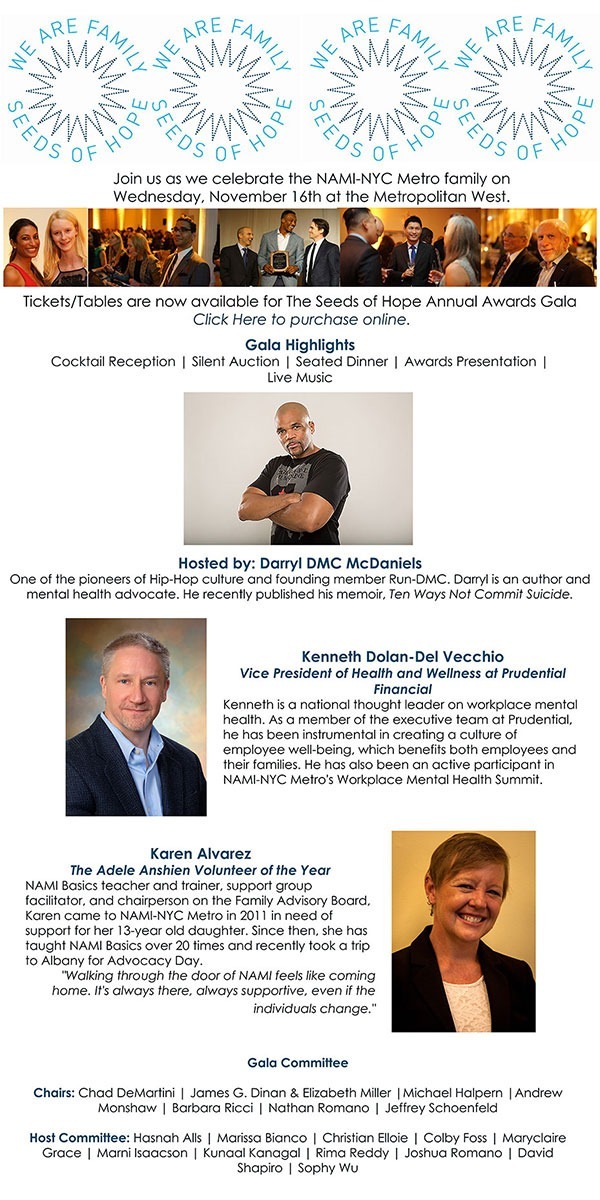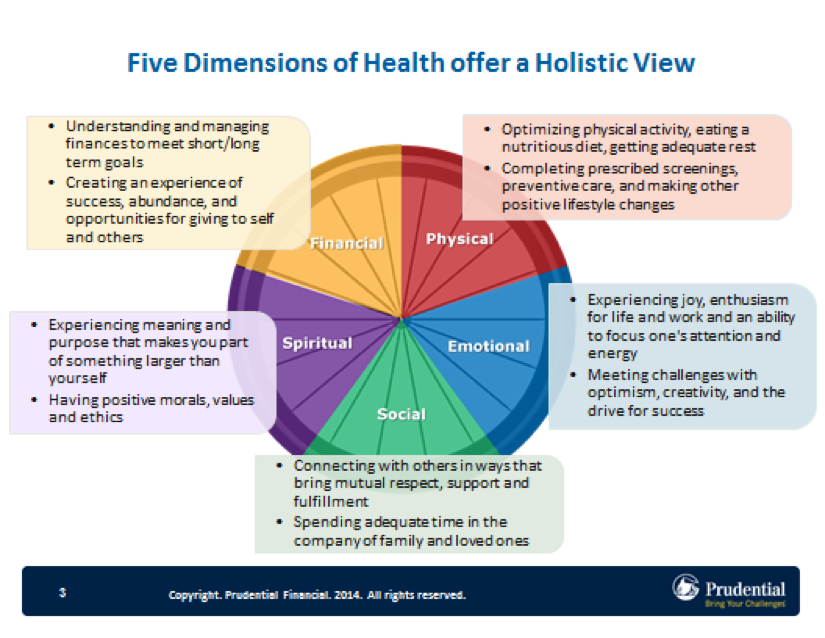How Employers Can Foster a Mentally Healthy Workplace
Is your workplace somewhere you feel safe, respected, valued, and empowered to do your best work? Given that most U.S. adults spend much of their waking hours on the job, it’s a question well worth asking. When you consider that one in five of those adults experience a mental health condition, it becomes even more urgent.
While a completely stress-free workplace is unrealistic, companies do have an important role to play in creating conditions that promote employees’ mental health. This not only makes work a more pleasant experience for your staff — multiple studies show that supporting employees’ mental health is good for businesses’ bottom line. The National Alliance on Mental Illness (NAMI) estimates that untreated mental illness costs the U.S. over $100 billion per year in lost productivity. And a 2016 World Health Organization study revealed that investment in mental health care yields a fourfold return in the form of better health and productivity.
“It’s the right thing to do but it’s also the smart thing to do, and I think employers are really getting that,” says Nancy Spangler, founder and CEO of Spangler Associates. “I think part of the reason employers are taking an interest in this is because it’s very, very costly not to.”
Indeed, more than half of employers in a Sept. 2018 Willis Towers Watson survey said they planned to invest in behavioral health to help manage rising health care costs. In April, the U.S. Department of Labor launched an online Mental Health Toolkit full of information for employers looking to support their employees’ mental health.
The responsibility of supporting employee mental health may seem daunting, but there are many things employers can do to achieve this and boost overall job satisfaction and productivity. What follows are some key steps your organization can take to help cultivate a mentally healthy workplace.
Break the Silence
Experts say that simply talking about mental illness can help normalize it, and helps create an environment where others feel safe to discuss the mental health issues affecting their lives.
“If people can come to work and have casual conversations about cardiac problems or diabetes, we should also be able to come to work and talk about a flare-up of our depression or anxiety and not feel like we’re going to be stigmatized for that,” says Ken Dolan-Del Vecchio, a family therapist, keynote speaker, and president of GreenGate Leadership.
Town hall gatherings, team meetings, or company newsletters can all be opportune times to discuss mental health. This could mean sharing statistics around mental health and reminding employees of the importance of seeking care, or sharing your own experience with mental illness or that of a family member, says Dolan-Del Vecchio.
An email newsletter reminding staff about mental health benefits gives people plenty of time to read and ask questions via email, rather than in a meeting surrounded by co-workers. Consider providing webinars or on-site guest speakers presenting information about common mental health issues. Dates such as Mental Health Month in May or National Substance Abuse Prevention Month in October are great opportunities to broach these topics with your workforce.
Respect the Work-Life Balancing Act
The importance of “work-life balance” gets plenty of lip service these days, which makes sense given that Americans are logging longer hours, and spending more time connected to work, than in years past. All those hours on the job, or being just a couple of clicks away from it at all times, can quickly add up to work-related stress. Despite the proliferation of ways to stay tethered to work, there are at least as many actions employers can take to encourage work-life balance and reduce workers’ job-related stress. These include:
- Offering a fair PTO policy and flexible work arrangements
- Ensuring time for breaks throughout the day
- Having managers lead by example and take vacation time and breaks
- Keeping after-hours contact to a minimum
“What this all comes down to is treating people with care and respect and with regard for the fact that we have limits in terms of how much we can give to our work and still be well,” says Dolan Del-Vecchio.
Pay Attention to Performance Issues
Mental health struggles aren’t always readily apparent, and people tend to be uncomfortable divulging a mental health condition at work. While managers should never try to diagnose their employees, it is their job to take notice when performance issues or negative behavioral changes happen, says Dolan-DelVecchio.
“You’re a supervisor, not a therapist,” he says. “You hold them accountable for their performance.”
That means watching for the following:
- Increases in absenteeism or lateness
- Missing hours or days of work without explanation
- A noticeable drop in functioning, engagement or productivity
- Mood swings, outbursts or other uncharacteristic, erratic behavior
- An unkempt physical appearance
- Social withdrawal and apparent avoidance of interactions with others
When an employee starts displaying one or more of these behaviors, and especially if the behavior persists, it’s important to step in and address it, experts say. The sooner this happens, the sooner that person can get the care they need.
Ride-sharing giant Lyft collaborated with Lyra to create a guide for managers on how to identify and respond to signs of mental health issues among their staff. The guide specifies the manager’s role in establishing trust, and how to be approachable and supportive while respecting the team members’ privacy and keeping conversations professional.
Introducing this type of guide can be a useful tool in empowering managers to better support employee mental health.
Meet with the Employee and Remind Them of Available Resources
After noticing an employee’s performance or behavior issues, it’s best to speak with them privately, approaching the conversation with a focus on work performance.
“The manager could say, ‘Hey, I see that you’re struggling in your work, here’s what I’m seeing,’ and be very specific about what kinds of performance difficulties they’re seeing”, Spangler suggests. Once the manager has verbalized the problem, he or she can remind the employee of the mental health resources available to them and discuss next steps. This could include any of the following:
- Connecting the person to your company’s employee assistance program (EAP)
- Referring them to their Lyra benefit, if offered by your company
- Referring them to a doctor, counselor or psychologist in their health care plan
- Discussing possible accommodations such as remote work or fewer hours, or allowing breaks so the person can seek treatment
- Mentioning your company’s disability policy (for those with a diagnosable mental illness)
- Scheduling a follow-up meeting to check in and provide further assistance if needed
—
As awareness of mental health issues grows and the cost savings of employer investment in mental health care become ever more apparent, the hope is that more employees will be able to respond “yes” when asked if their workplace is mentally healthy. In an increasingly competitive job market, now is the time to ask yourself how your own employees would respond.
Source: https://www.lyrahealth.com/blog/how-employers-can-foster-a-mentally-healthy-workplace/


 Ken Dolan-Del Vecchio, LMFT, SPHR, is an award-winning leader, speaker, consultant, author, and family therapist. He founded GreenGate Leadership® in 2017 after retiring from his role as Vice President, Health and Wellness, at Prudential, where he was responsible for behavioral health services. His team’s work led Prudential to receive the American Psychological Association’s 2017 Organizational Excellence Award. Ken was honored with the 2017 Leadership Award from the Employee Assistance Society of North America (EASNA). The National Alliance on Mental Illness’ New York City Metro Chapter named him 2016 Corporate Leader of the Year. Ken has authored four books and numerous other publications. He is a monthly NBC TV affiliate on-air guest and has been quoted in The Wall Street Journal, Fast Company, Entrepreneur, Inc. Magazine and other media. Learn more at
Ken Dolan-Del Vecchio, LMFT, SPHR, is an award-winning leader, speaker, consultant, author, and family therapist. He founded GreenGate Leadership® in 2017 after retiring from his role as Vice President, Health and Wellness, at Prudential, where he was responsible for behavioral health services. His team’s work led Prudential to receive the American Psychological Association’s 2017 Organizational Excellence Award. Ken was honored with the 2017 Leadership Award from the Employee Assistance Society of North America (EASNA). The National Alliance on Mental Illness’ New York City Metro Chapter named him 2016 Corporate Leader of the Year. Ken has authored four books and numerous other publications. He is a monthly NBC TV affiliate on-air guest and has been quoted in The Wall Street Journal, Fast Company, Entrepreneur, Inc. Magazine and other media. Learn more at  Unlike some physical ailments, mental health disorders are often less outwardly evident. This, combined with stigma, makes it easy for many people to avoid talking about mental illness or deny its existence altogether. And in the workplace, the mere mention of stress, depression or anxiety can make an otherwise capable manager uncomfortable.
Unlike some physical ailments, mental health disorders are often less outwardly evident. This, combined with stigma, makes it easy for many people to avoid talking about mental illness or deny its existence altogether. And in the workplace, the mere mention of stress, depression or anxiety can make an otherwise capable manager uncomfortable.



